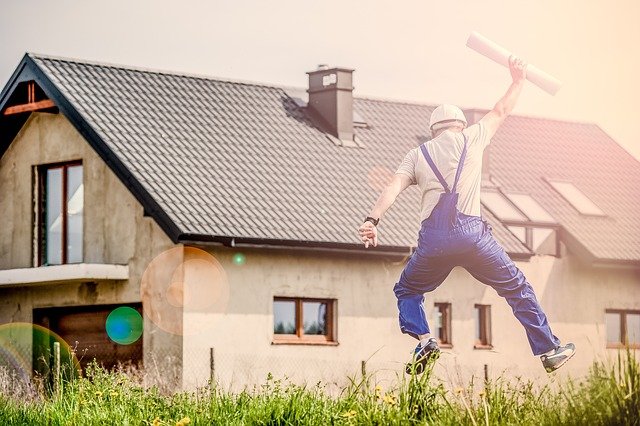Abandoned Homes In Japan Explained : What You Need to Know
Japan faces a growing phenomenon of abandoned properties, known locally as akiya, scattered across rural and urban areas alike. These vacant homes represent a unique intersection of demographic shifts, economic challenges, and cultural attitudes toward property ownership. Understanding why these homes exist, what opportunities they present, and how to navigate the process of acquiring one can open doors to affordable real estate in one of the world's most fascinating countries.

The issue of vacant homes in Japan has reached significant proportions, with millions of properties sitting empty across the archipelago. This situation stems from complex social and economic factors that have transformed the Japanese real estate landscape over recent decades. For international observers and potential buyers, these abandoned properties present both intriguing opportunities and important considerations that require careful examination.
What Are the Causes of Abandoned Homes In Japan?
Japan’s abandoned home crisis results from multiple converging factors. The country’s aging population and declining birth rate have created a demographic shift where rural areas experience significant depopulation as younger generations migrate to urban centers for employment opportunities. Many elderly homeowners pass away without heirs willing to maintain or occupy family properties, particularly in remote locations.
Cultural attitudes toward housing also contribute to the problem. Japanese buyers traditionally prefer newly constructed homes over older properties, viewing pre-owned houses as less desirable regardless of their condition. This preference stems partly from concerns about earthquake safety standards and partly from cultural values emphasizing newness and modernity. Additionally, the inheritance tax system and property maintenance costs can make keeping inherited homes financially burdensome, leading families to simply abandon properties rather than sell them.
Economic stagnation in rural regions has further exacerbated the situation. As local industries decline and job opportunities disappear, entire communities shrink, leaving behind infrastructure and housing stock with little market demand. The cost of demolishing unwanted structures often exceeds the land value, creating a disincentive for property disposal.
Understanding the Process of Buying an Akiya
Purchasing an abandoned home in Japan involves navigating specific legal and practical requirements. Foreign buyers can legally own property in Japan without residency restrictions, though the process requires careful attention to detail. The first step involves identifying available properties through akiya banks, which are municipal databases listing vacant homes available for sale or rent at low prices.
Prospective buyers should conduct thorough property inspections, as many akiya have been vacant for years and may require substantial renovation. Structural issues, pest damage, and outdated utilities are common concerns. Engaging a qualified inspector familiar with Japanese building standards is essential. Legal due diligence includes verifying clear title ownership, checking for outstanding debts or liens, and ensuring property boundaries are properly documented.
The transaction process typically requires working with a licensed real estate agent and judicial scrivener who handles the legal paperwork. Buyers should budget for various fees including acquisition tax, registration fees, agent commissions, and potential renovation costs. Some municipalities offer subsidies or grants to encourage akiya purchases, particularly in areas actively seeking population revitalization. Language barriers can present challenges, so working with bilingual professionals or translators is advisable for non-Japanese speakers.
What Are the Opportunities of Abandoned Homes In Japan?
Abandoned properties in Japan offer diverse opportunities for different types of buyers. Budget-conscious individuals can acquire property at remarkably low prices, with some akiya available for under 50,000 USD or even given away free in exchange for renovation commitments. These properties can serve as vacation homes, retirement residences, or rental investments targeting the growing market of tourists seeking authentic Japanese experiences.
Entrepreneurs have transformed akiya into guesthouses, cafes, art studios, and coworking spaces, contributing to rural revitalization efforts. The Japanese government actively supports such initiatives through various programs aimed at reversing population decline in countryside areas. Creative professionals appreciate the affordable space and tranquil environments that rural akiya provide, while remote workers find them ideal for establishing alternative lifestyles away from expensive urban centers.
Cultural enthusiasts value the opportunity to preserve traditional Japanese architecture, as many akiya feature historical construction methods and design elements increasingly rare in modern Japan. Restoration projects can maintain cultural heritage while adapting properties for contemporary use. Additionally, some buyers view akiya as long-term investments, anticipating that strategic locations may appreciate as infrastructure improves or demographic patterns shift.
Important Considerations Before Purchasing
Potential buyers must carefully evaluate several factors before committing to an akiya purchase. Location significantly impacts both lifestyle and resale potential. Properties in extremely remote areas may offer rock-bottom prices but come with limited access to services, healthcare, and transportation. Climate considerations matter, as regions with heavy snowfall require substantial maintenance and heating costs.
Renovation expenses can quickly escalate, particularly when addressing structural issues or updating properties to modern standards. Obtaining accurate cost estimates from local contractors before purchase helps avoid financial surprises. Ongoing expenses including property taxes, utilities, and maintenance should factor into budget calculations. Some rural areas have community obligations or expectations for property owners that may include participation in local festivals or maintenance of communal spaces.
Visa and residency requirements deserve attention for those planning extended stays. While property ownership does not grant residency rights, various visa categories may accommodate different purposes such as business, retirement, or cultural activities. Understanding local regulations regarding property use, particularly for commercial ventures, ensures compliance with zoning and business licensing requirements.
Conclusion
Abandoned homes in Japan represent a complex phenomenon rooted in demographic, economic, and cultural factors. While these properties offer remarkable opportunities for affordable real estate acquisition and creative projects, they require careful research, realistic budgeting, and thorough due diligence. Understanding the causes behind the akiya situation, navigating the purchase process with professional guidance, and recognizing both the potential and challenges these properties present enables informed decision-making. For those willing to invest time and resources, akiya can provide unique pathways to property ownership and meaningful engagement with Japanese rural communities.




